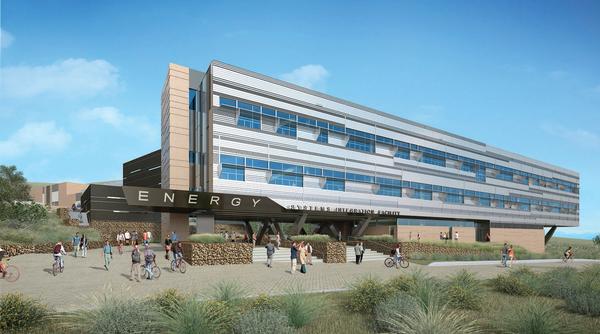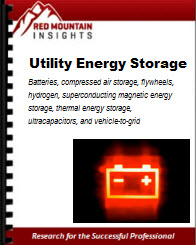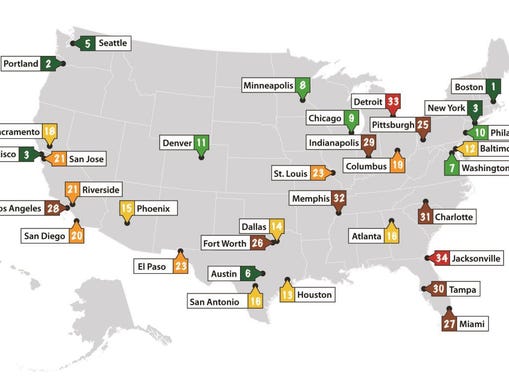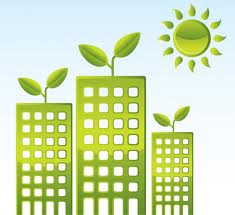Eight busloads of architects and mechanical engineers toured one of the world’s largest net-zero-energy office building this summer at the Energy Department’s National Renewable Energy Laboratory (NREL) and came away inspired with new ideas for how to design and build beautiful, eco-friendly structures on a budget.
Tickets for the tours sold out almost as fast as a Paul McCartney concert, the busloads another reminder of how professionals are embracing high-performance, energy-efficient buildings.
The premier professional organizations for architects and building engineers — the American Institute of Architects (AIA) and the American Society of Heating, Refrigerating and Air-Conditioning Engineers (ASHRAE) — both held their national conferences in Denver this summer, within a few days of each other.
Denver is just 14 miles from Golden, the site of NREL’s main campus and its Research Support Facility (RSF), a 360,000-square-foot office building that Construction Digital Magazine last year named the top net-zero-energy building in the world. A group of NREL engineers including Sheila Hayter, Rachel Romero, and Shanti Pless organized the trips to NREL’s campus — and led tours with help from the architects at RNL and SmithGroup JJR and the contractors from JE Dunn and Haselden, who worked with NREL to design and build the RSF and the new Energy Systems Integration Facility (ESIF).
Busloads of architects and mechanical engineers recently toured the Energy Systems Integration Facility. Here, they view the high performance computing data center, which will house one of the world’s most energy-efficient super computers. The petascale system will be dedicated to energy efficiency and renewable energy research.
Credit: SmithGroup JJR/Bill Timmerman
“People were lining up at will call to get tickets to the tour,” said Angela Innes, marketing manager for JE Dunn Construction, the main contractor on the ESIF project. “We saw huge interest and got a lot of feedback from architects from all over the world.”
The AIA architects and ASHRAE engineers marveled at the energy efficiency and the aesthetics of the RSF, and some dropped their jaws when they learned it was built in 2010 and 2011 for no more than the average square-foot cost — $259 — of other office buildings in the Denver area. In addition, the engineers saw that using biomass to heat buildings is a viable option for saving greenhouse gases and viewed one of the most energy-efficient data centers in the world.
NREL Shows High Performance is Economical
“Designers of commercial buildings are serious about creating energy-efficient buildings,” said NREL’s Hayter, who chairs ASHRAE’s Planning Committee, is a past ASHRAE vice president, and previously served on the steering committee that developed the original charter for ASHRAE’s Advanced Energy Design Guideline (AEDG) series that shows the way toward achieving 30% or 50% greater efficiency or net-zero energy.
“The architects visiting NREL were pretty amazed at the design of the RSF. They are anxious to learn how to make energy-efficient decisions with a very limited budget — without sacrificing aesthetics,” Pless said. A full-day pre-convention workshop at the AIA conference gave architects the chance to do exactly that: make design decisions with an eye for energy efficiency. The workshop taught them how to use OpenStudio, an Energy Department tool developed at NREL, to evaluate the energy impact of early design decisions such as orientation, massing, fenestration, construction assemblies, and internal building activity. They created baseline energy models and then made what-if alternatives using energy conservation measures pulled from the online Building Component Library, another Energy Department tool developed at NREL.
“We sent 200 of our people to NREL. It was all sold out,” said Nicolle Thompson, director of programs and sponsorship for AIA Colorado. “It was extremely popular. There are so many great projects at NREL, and many of our members participated in building that campus. The RSF and ESIF are getting such national recognition. It’s not easy to build a net-zero building of that size economically. We wanted to show it off.”



 “We may have to take the bill down,” said Senate Majority Leader Harry Reid, D-Nev.,noting unrelated amendments including one by Sen. David Vitter, R-La., to weaken President Obama’s health care reform law. The bill’s authors, Sens. Jeanne Shaheen, D-N.J., and Rob Portman, R-Ohio, had removed some provisions to avoid divisiveness, but acrimony ensued anyway.
“We may have to take the bill down,” said Senate Majority Leader Harry Reid, D-Nev.,noting unrelated amendments including one by Sen. David Vitter, R-La., to weaken President Obama’s health care reform law. The bill’s authors, Sens. Jeanne Shaheen, D-N.J., and Rob Portman, R-Ohio, had removed some provisions to avoid divisiveness, but acrimony ensued anyway.

